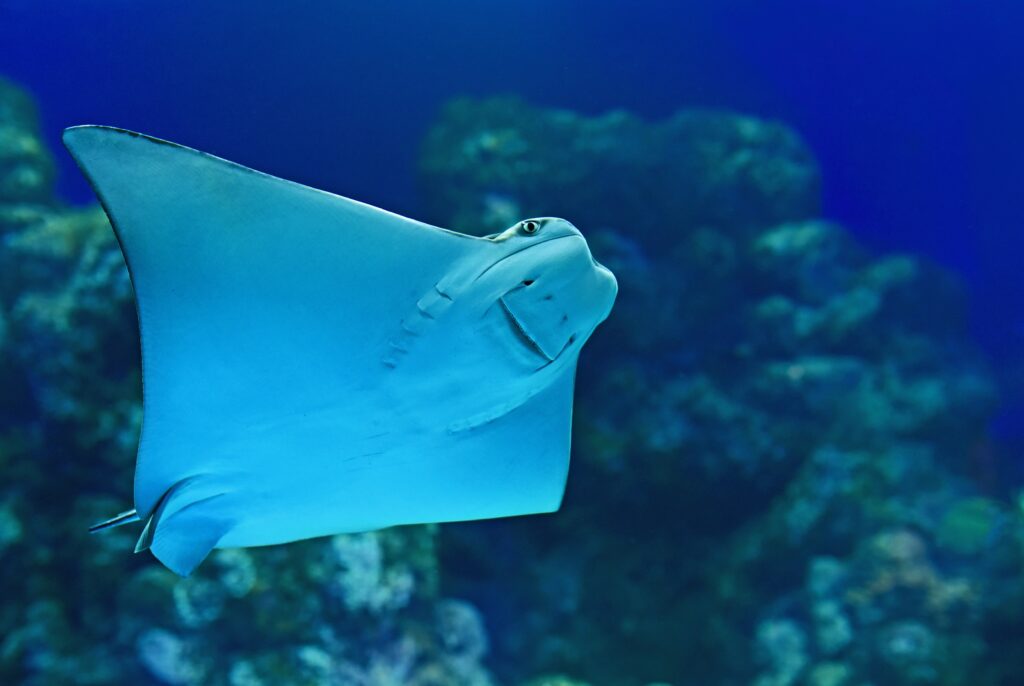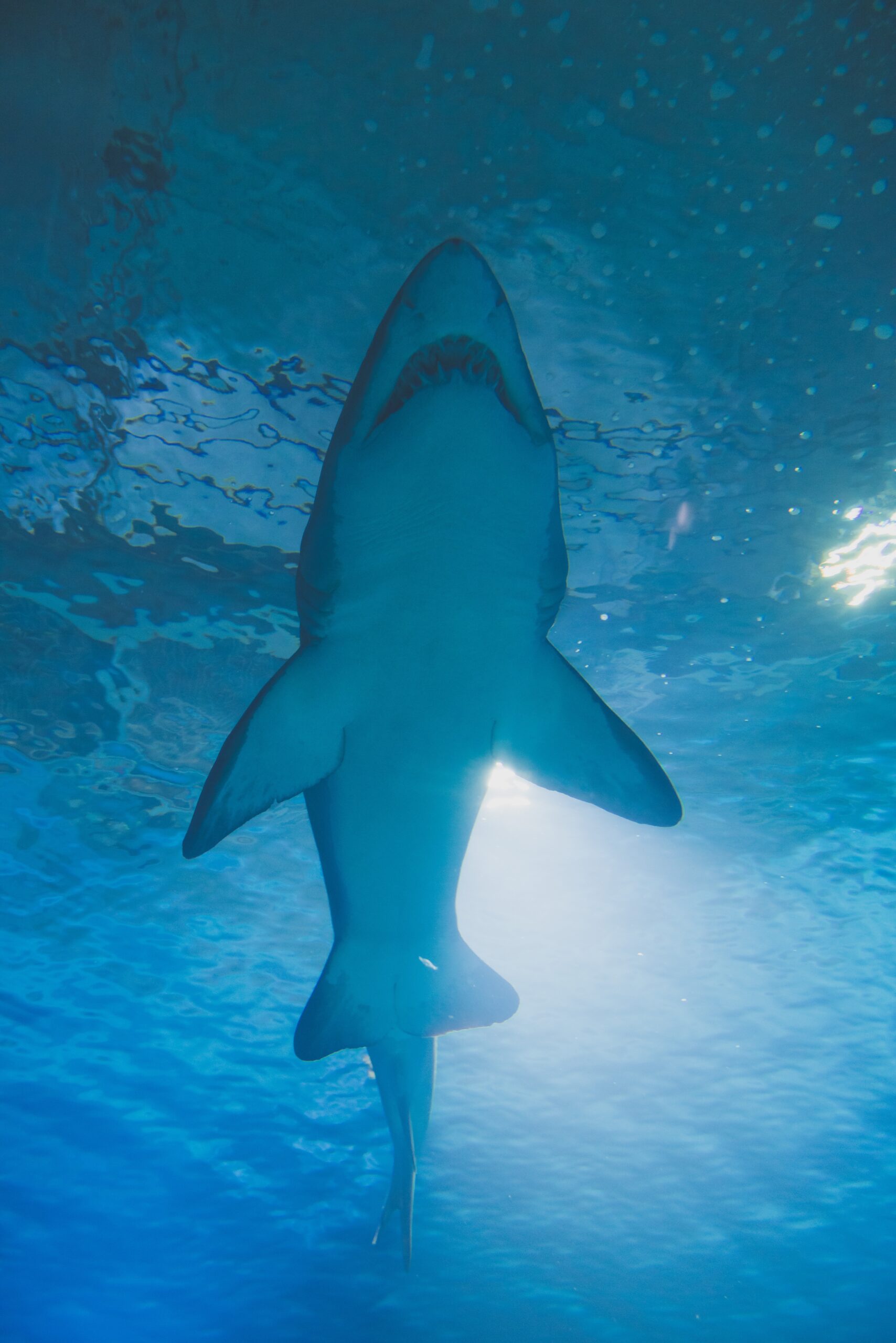Most people have a healthy fear of sharks. Countless movies, shows and books have painted sharks with a distinctly evil, man-eating brush. But sharks are more good than bad. In fact, they are absolutely essential for keeping ecosystems healthy, and healthy ecosystems provide us with food, recreation, and other valuable services.
However, when humans disrupt natural ecosystems by polluting and overfishing, there can be far-reaching consequences. Now, shark populations are dwindling due to human activity. An unexpected consequence: scallops are disappearing too.
The Players
Sand Tiger Sharks are a major predator along the East Coast. Distinctive for its mouthful of long, thin, curved teeth, they are undoubtedly scary-looking. However, these surprisingly gentle and social animals are important for maintaining balance in bays and coastal oceans.
Sand Tiger Sharks eat many mid-level predators, ensuring that shellfish and other small animals continue to thrive. Unfortunately, their populations are declining due to sport fishing and bycatch (when fishermen try to catch certain types of fish in their nets but end up catching others as well). These factors, combined with shark’s very low birthrates, have resulted in the species being labelled as vulnerable on the International Union on the Conservation of Nature’s list of endangered species.

Scallop-lovers may be familiar with the fragile state of the scallop fishery. According to the National Oceanic and Atmospheric Association, scallop stocks were collapsing toward the end of the 20th century. Fortunately, steps were taken to help the species recover. Fishery managers continue to monitor the fishery and look for ways to ensure scallop numbers keep rising.
So how do the two species relate? First, we need to look at some basic ecology.
Cascades
In a perfect ecosystem, there would be a pyramid-like structure of organism numbers. Small animals forming the base of the pyramid. Above them are a smaller but sizable group of mid-level predators. Finally, an even smaller number of apex predators live at the top. In this case, Sand Tiger Sharks are the apex predator, while scallops are at the base of the pyramid.
However, because humans are killing the sharks faster than they can reproduce, there are not enough sharks left to perform their job in the food chain – eating cownose rays. It just so happens that the cownose rays love to eat scallops.

Low shark numbers have resulted in a population explosion for the rays. Massive schools of rays swim together from scallop bed to scallop bed, decimating the populations as they go. This has once again intensely pressured scallop populations, as well as the scallop farmers fighting to have a profitable business.
Many people may be reading this and wondering, “Why do I care about sharks or scallops anyway? I don’t eat them!” But this type of unbalancing of the food pyramid, called a trophic cascade, occurs in many different habitats, both in the ocean and on land. As humans put pressure on high level predators across all systems, the food pyramids become less stable. Eventually, we may struggle not only to feed ourselves, but to survive in environments that are vastly different from what we have now.
So what can we do about it? One solution is to eat vegetarian! Even if it’s only once or twice a week, eating less meat, especially things like tuna, can go a long way to reducing our impact on fish communities. Additionally, avoiding businesses serving shark meat and buying from local or sustainable sources can have a lower global impact and prevent the loss of our natural world.
*******
For more information about scallop population Information, check out NOAAs 2014 Atlantic Sea Scallop Stock Assessment (https://www.nefsc.noaa.gov/publications/crd/crd1409/partb.pdf)
To further explore the science behind trophic cascades in sharks and scallops, read Ransom Meyers et al (2007). Cascading Effects of the Loss of Apex Predatory Sharks from a Coastal Ocean. Science 315. DOI: 10.1126/science.1138657
To learn more about marine life, click here.

